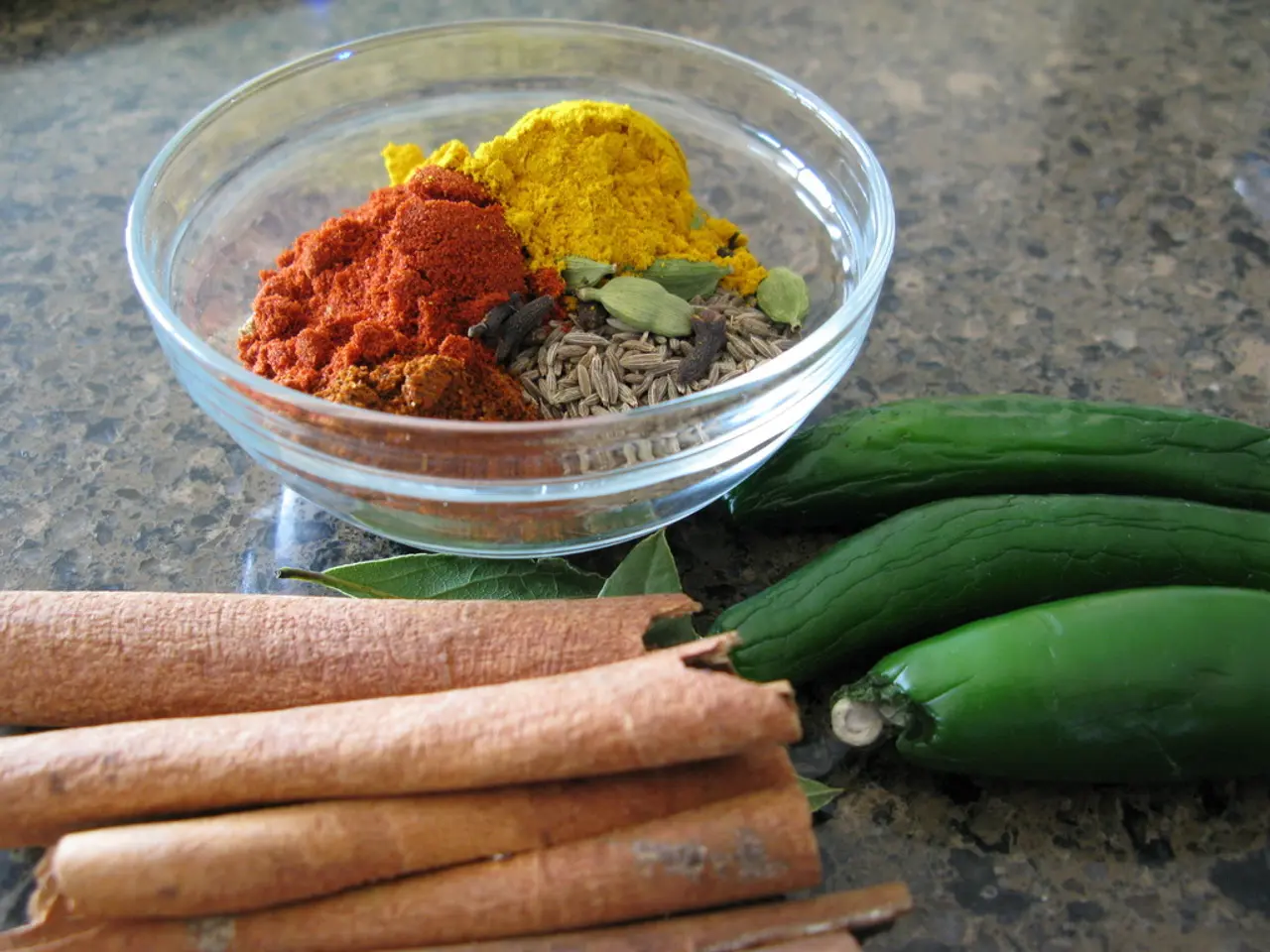Home-Based Solutions for Simple Homemade Fermentations
Fermentation, a process that has been practiced for thousands of years, is making a comeback in modern kitchens. This ancient technique not only adds a unique flavour to various foods but also offers numerous health benefits. In this beginner's guide, we'll explore the essential equipment, basic methods, and starter recipes for homemade fermentation.
Essential Equipment
To embark on your fermentation journey, you'll need a few essential tools. These include:
- Clean wide-mouth glass jars or food-grade fermentation crocks
- Fermentation weights or alternatives (smaller jars, plates, or bags of water) to keep vegetables submerged under brine
- Fermentation lids with airlocks, pickle pipes, or loose covers to allow gases to escape
- Measuring cups and mixing bowls
- Knife or food processor for chopping vegetables
- Non-iodized salt (Kosher or Himalayan); avoid table salt
- Filtered or spring water to make brine (avoid chlorinated tap water)
Basic Fermentation Methods
There are two primary methods for fermenting foods: simple brine and dry-salt pack.
Simple Brine
Create a brine by dissolving salt (about 1-3% by weight) in water and pouring it over your vegetables until they are fully submerged.
Dry-Salt Pack
For the dry-salt pack method, massage salt (2-3%) directly into shredded vegetables that release their own juice, creating a natural brine, such as sauerkraut.
Starter Fermentation Recipes
Let's dive into some starter recipes to get you started on your fermentation adventure.
| Recipe | Steps Summary | Fermentation Time | Notes | |----------------------|-----------------------------------------------------------------------------------------------------|--------------------------|---------------------------------| | Fermented Garlic | Mince or leave garlic whole → Make brine (2 cups water + 2 tbsp salt) → Pack in jar + weight → Add brine to cover → Seal with fermentation lid → Store 2-3 weeks at ~65ºF[1]. | 2-3 weeks | Use raw fermented garlic for max benefits[1]. | | Basic Sauerkraut | Shred organic cabbage → Massage salt (about 2-3%) into cabbage → Pack tightly in jar → Add weight → Cover with lid/not airtight → Ferment ~1-3 weeks → Refrigerate when done[4]. | 1-3 weeks | Use filtered water and non-iodized salt[4]. | | Kosher Dill Pickles | Pack cucumbers in jar → Add brine → Add weights → Seal with airlock or cover → Ferment until desired taste[2]. | 1-4 weeks (varies) | Use food-safe containers and weights[2]. |
Step-by-Step Starter Process
- Wash and chop your vegetables uniformly for even fermentation.
- Prepare a salt brine (1-3% salt by weight) or use a dry-salt pack method.
- Pack vegetables tightly into clean jars, ensuring they are submerged under brine.
- Add weights to keep vegetables submerged and prevent oxygen exposure.
- Seal jars with fermentation lids designed to release gas but keep out oxygen.
- Store in a cool, dark place around 60-70ºF (~15-21ºC) for 1-3 weeks or until taste and texture is ideal.
- Transfer to refrigerator to slow fermentation and preserve.
Starting with simple fermented vegetables like garlic, cucumber pickles, or sauerkraut is recommended for beginners, as these recipes require minimal ingredients and equipment while reliably producing safe, delicious ferments.
This approach offers hands-on experience with the core fermentation principles and reassurance before moving onto more complex ferments like yogurt or kombucha. Happy fermenting!
[1] https://www.healthline.com/nutrition/fermented-garlic-benefits [2] https://www.healthline.com/nutrition/how-to-make-pickles [3] https://www.healthline.com/nutrition/dry-salt-pack-sauerkraut-recipe [4] https://www.healthline.com/nutrition/how-to-make-sauerkraut
- In addition to fermented foods offering a unique flavor, they also provide numerous health benefits, making them a popular choice in the health-and-wellness and lifestyle communities.
- For those interested in incorporating global cuisines into their food-and-drink repertoire, exploring healthy-cooking techniques such as fermentation can provide a wealth of knowledge and delicious results.
- Fitness-and-exercise enthusiasts may find that adopting a more holistic approach to wellness, including healthy cooking and fermentation, complement their overall health goals.
- In the world of science, the study and application of fermentation extend beyond kitchens and global cuisines, with potential implications for various fields like medicine and technology.




